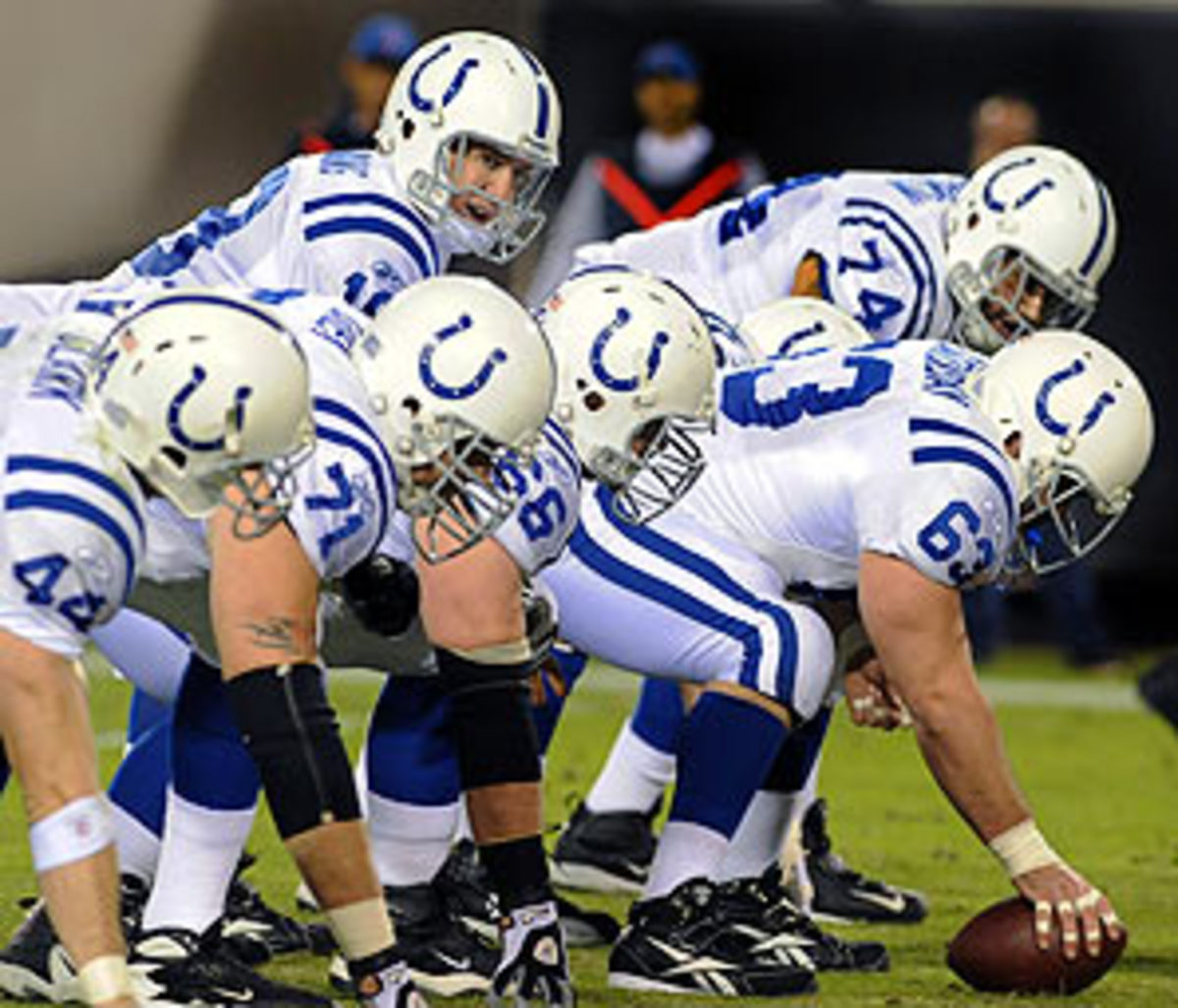Super Bowl XLIV trench breakdown
Peyton Manning. Drew Brees. We've heard all about the superstar quarterbacks of Super Bowl XLIV, but what about the big guys in front of them? Here's a breakdown of the matchups in the trenches:
The Colts were the worst rushing team in football during the regular season. They are certainly not a physical football team that can line up in a two tight end set and run it right up the gut. Fact is, they were dreadful in most short-yardage or obvious running situations this season.
A big reason for this is they are undersized and lack the power to get vertical displacement off the football. In fact, if you ran into starting guards Ryan Lilja and Kyle Devan on the street you'd have a hard time believing they are starters on an offensive line. But what they lack in girth, they make up for in athleticism and football intelligence. Those qualities allow them to be sneaky productive in the running game. This unit is most effective running when the opposition brings in extra defensive backs, which we saw in the AFC Championship Game against the Jets.
If the Saints are going to win this game, they must win this matchup. It will not be easy. The Colts defense is no longer the undersized unit it has been in years past. It got significantly bigger inside with defensive tackles that weigh over 300 pounds, like Daniel Muir and Antonio Johnson. Those two combine with active and aggressive tackle/ends like Raheem Brock and Eric Foster to give the Colts an excellent rotation inside.
That defensive line allows playmaker linebackers like Gary Brackett and Clint Session to do what they do best, which is run and hit. Brackett has long been the heart and soul of this team defensively, yet is still one of the more underrated players in the NFL. Session has burst on the scene this year as a violent downhill tackler who is among the more dynamic young defensive players in the league.
The Colts, though, have a tall order going against a Saints offensive line that has consistently opened holes for its three-pronged rushing attack (Reggie Bush, Pierre Thomas, Mike Bell). Most pundits will tell you the Saints need to run the football to keep the ball out of Manning's hands. It is actually much more important they do so to open up the middle of the field for the play-action pass game that allows the Saints to get big chunks of yardage. The Saints need points in this game and lots of them -- not time of possession.
The good news for the Saints is their defensive line is much better at applying pressure than they are getting credit. Will Smith is the bell cow of this group and a consistent threat, but they also have gotten much-needed contributions from Anthony Hargrove, Bobby McCray, Sedrick Ellis and Remi Ayodele. All of those guys have shown an ability to get to the passer and cause damage.
The bad news is it may not really matter all that much. Manning is the best quarterback at getting rid of the football before the pass rush can get to him. Even when his linemen get beat cleanly at the line of scrimmage, Manning is able to sense that and get rid of the football almost immediately. So quickly, in fact, he rarely gets hit, let alone sacked.
The team that had the most success getting to Manning was San Francisco; it did so primarily up the middle by employing a bull-rush technique. As long as the defender is covered up by a Colt, Manning stays alive in the pocket and thinks he is protected. If the bull rusher gets enough of a push, he can grab Manning's arm or take him down before he knows what hit him. It sounds counterintuitive but it is better than coming free, because if a defender comes free, Manning will unload the football without hesitation.
Obviously Dwight Freeney's ability to play, and play at a high level, is paramount in this matchup. What makes it especially difficult for Freeney is his right ankle is his plant leg, the one from which he generates all of his force when turning the corner on the offensive tackle.
The problem for Freeney, even if he does play, and his counterpart on the other side, Robert Mathis, is they may have to turn the corner at a greater angle than normal just to get to Brees in the first place. The Saints are blessed to have one of the best interior offensive lines in football, led by All-Pro guard Jahri Evans. The Colts interior pass rush is pedestrian. That combination makes it absolutely critical, from a Saints perspective, that those three interior blockers stone-wall the Colts inside rushers, giving up as little ground as possible to them. If they accomplish this, Brees will be able to step up in the pocket and deliver the football from three or four yards behind the line of scrimmage. As great as Mathis and a healthy Freeney are, that angle is almost impossibly steep for them to be able to turn the corner and track down Brees. That could mean plenty of time for the most accurate passer in the NFL.






